World's Longest Lava Tube, world record in Hawaii

Hawaii, United States--Kazumura Cave, a lava tube located on the island of Hawaiʻi on the eastern slope of Kīlauea, has been surveyed at 40.7 miles (65.5 km) long and 3,614 feet (1,102 m) deep, thus setting the world record for being the World's Longest Lava Tube, according to the WORLD RECORD ACADEMY.
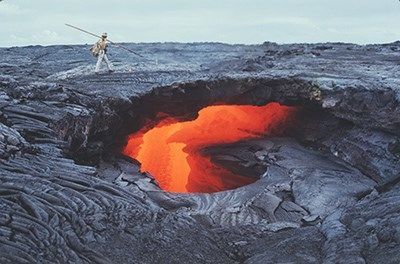
"Kazumura Cave is a lava tube and has been surveyed at 40.7 miles (65.5 km) long and 3,614 feet (1,102 m) deep making it the longest and deepest lava tube in the world. The cave is located on the island of Hawaiʻi on the eastern slope of Kīlauea. Kīlauea is the most recently active volcano on the Big Island. The ʻAilāʻau lava flow that contains Kazumura Cave originated from the Kīlauea Iki Crater about 500 years ago.
"One of the earliest documentations of Kazumura Cave was in 1966 when one of its entrances was designated as a fallout shelter. By the early 1970s, the cave had entered into the awareness of the caving community when Francis Howarth discovered new troglobitic moth species, Schrankia howarthi. Later in 1981, a British expedition ended up surveying 7.27 miles (11.7 km) of the cave and it was then recognized as one of the world's longest lava tubes
"By 1993, a single year of extensive surveying established that it was the longest in the world. Originally Kazumura was two separate caves known as Upper Kazumura and Old Kazumura. Kevin Allred and Mike Meyer connected the two caves after seeing a small connection between the two caves and enlarging it to permit entry. More connections were made later at Paradise Park Cave when it was connected to Kazumura through a breakdown pile. Later, a culvert was installed to keep the passage stable. Sexton Cave was discovered nearby; its passage ended where Kazumura's began. After some digging in black lava rock, Kevin and Mike Shambaugh got close to connecting these two caves. Eventually Shambaugh connected them after continuous digging. Kevin and Carlene Allred then surveyed the combined caves to a total of 29.32 miles (47.19 km), which made it the longest lava tube in the world." (Wikipedia)
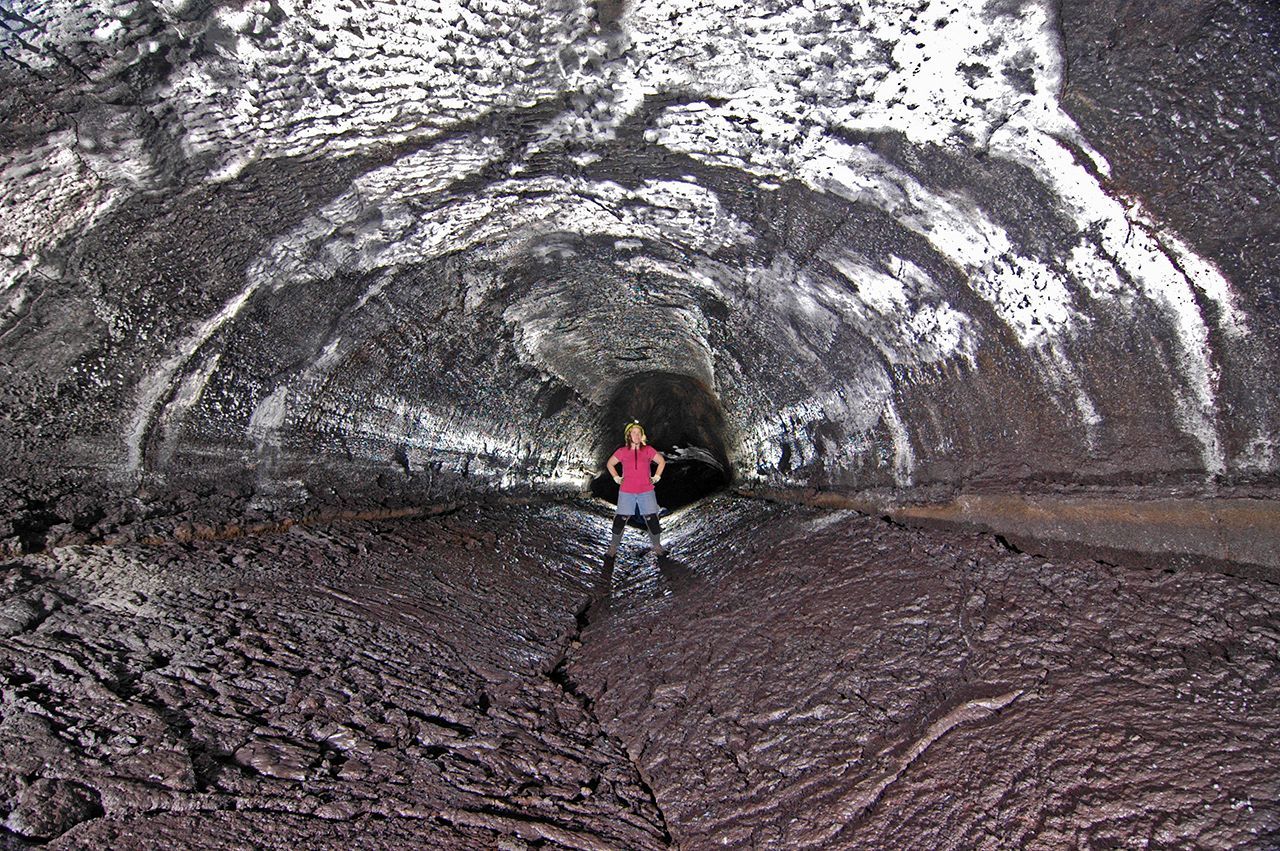
"Kazumura Cave is a very recent discovery. In the mid 1990s several known lava tubes and some new discoveries were connected to one big cave. So today Kazumura Cave is the longest lava tube of the world, more than 60 km long.
Below Pakalolo. It is the deepest cave of the USA and the eighth longest. The second deepest cave of the USA is still a lava tube of Hawai'i, Huehue Cave. This statistic is rather impressive, although a comparison with karst caves is not very useful," the
official website says.
"A through trip from the Progress of Man entrance near Volcano National Park to the lowest entrance in Paradise Park near Hilo takes two days. Such a trip includes 17 rope drops and 50 km of traverse. On the tours provided by Harry Shick, the visitors see three kilometers of the cave without any drops. Still such an adventure takes five hours.
"This cave is rather young, the lawa flow and the forming of the caves happened only about 350 to 700 years ago. The tube contains all kinds of lava formations, like lava Falls, lava blades, tubular lava stalactites, stretched lava, and lava plunge pools. We first added Kazumura Cave to showcaves.com, because of the enormous size of this cave. At this time no part of it was open to the public. In between Harry Shick started tours to one of the prime areas of the Kazumura system. He offers any kind of tours, from an 1 hour walking trip to an 8 hour technical trip."
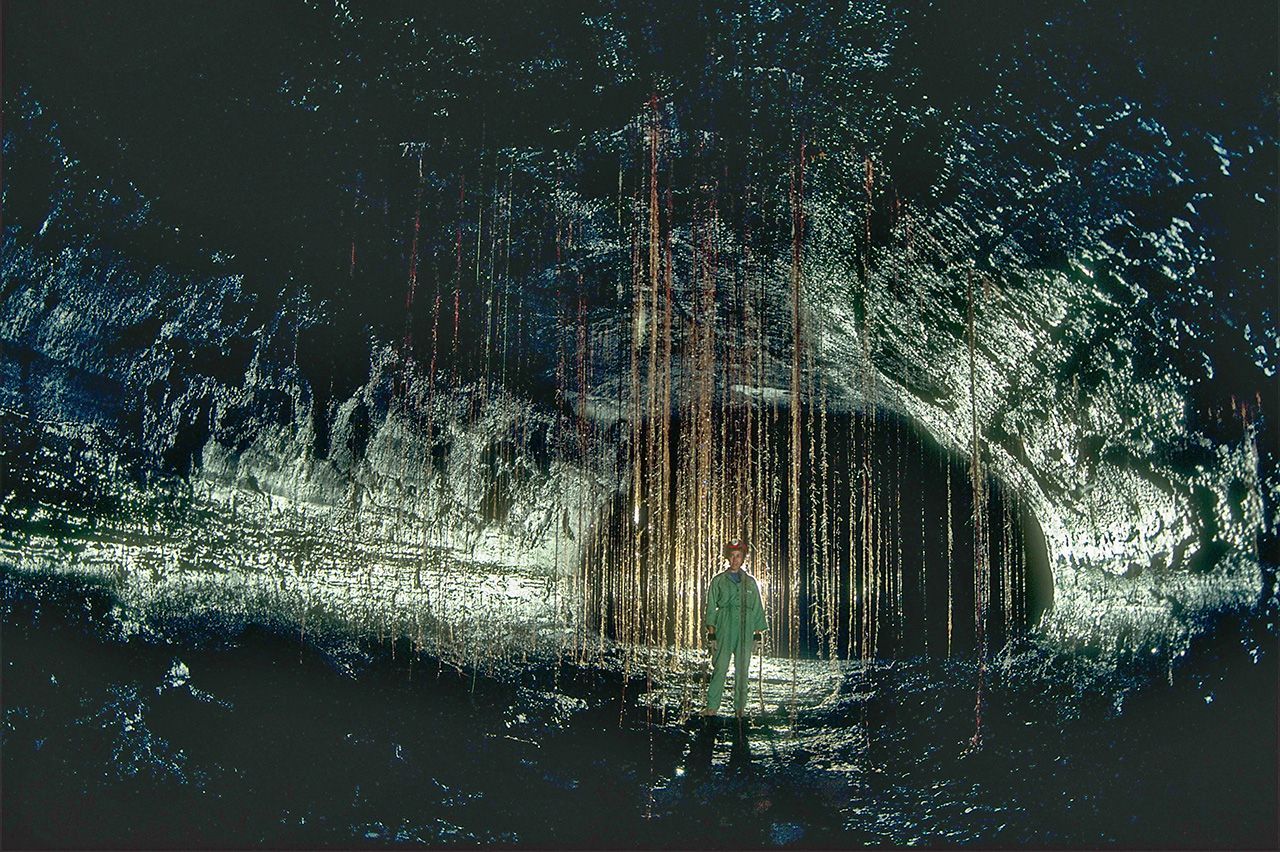
"As islands created by volcanoes, Hawaiʻi is criss-crossed by countless lava tubes. These underground passageways, also known as pyroducts, are created by lava flows themselves and are capable of transporting great quantities of lava long distances underneath the surface. When the supply of lava stops at the end of an eruption, or if it gets diverted elsewhere, it leaves behind an empty cave," the National Park Service says.
"When a lava tube is active, lava travels along its floor at temperatures that exceed 2,000º F (1090º C). Winds of superheated fume may blast through the tunnel, yet the only sound may be the constant soft hiss of the relentless flow. Once lava subsides, these subterranean corridors become home to unique ecosystems of troglobites, animals specifically adapted to live in this dark isolated world. Distinct species of crickets and spiders develop alongside special microbial colonies found nowhere else.
"The Kazumura lava tube system, within the 500 year-old ‘Ailā‘au lava flow of Kīlauea, is more than 40 miles (65 km) long and is thought to be the longest lava tube cave in the world. Tubes may be up to several dozen feet wide."

"A world of caves exists beneath Hawaii’s surface that’s still relatively unknown. It’s been estimated that the islands are home to more than 800 caves. Some are big, some are small, some are underwater, and others are expansive networks of open lava tubes beneath volcanoes — but only a few are accessible to the public," the SFGATE.com says.
"Of all the islands, the Big Island of Hawaii is the most renowned for its caves, such as Nahuku and Kaumana. But the most distinguished is on the east side of the island in the district of Puna, where Kazumura Cave can be found.
"Kazumura Cave is the longest lava cave in the world. More than 40 miles long, it descends the east side of the Kilauea volcano to a depth of 3,614 feet. Lava once flowed through this ancient tube system that was active during the Ailaau eruption in the 15th century. Its name, Kazumura, comes from 1966 when one of its entrances (possibly owned by the Kazumuras) was designated as a fallout shelter."
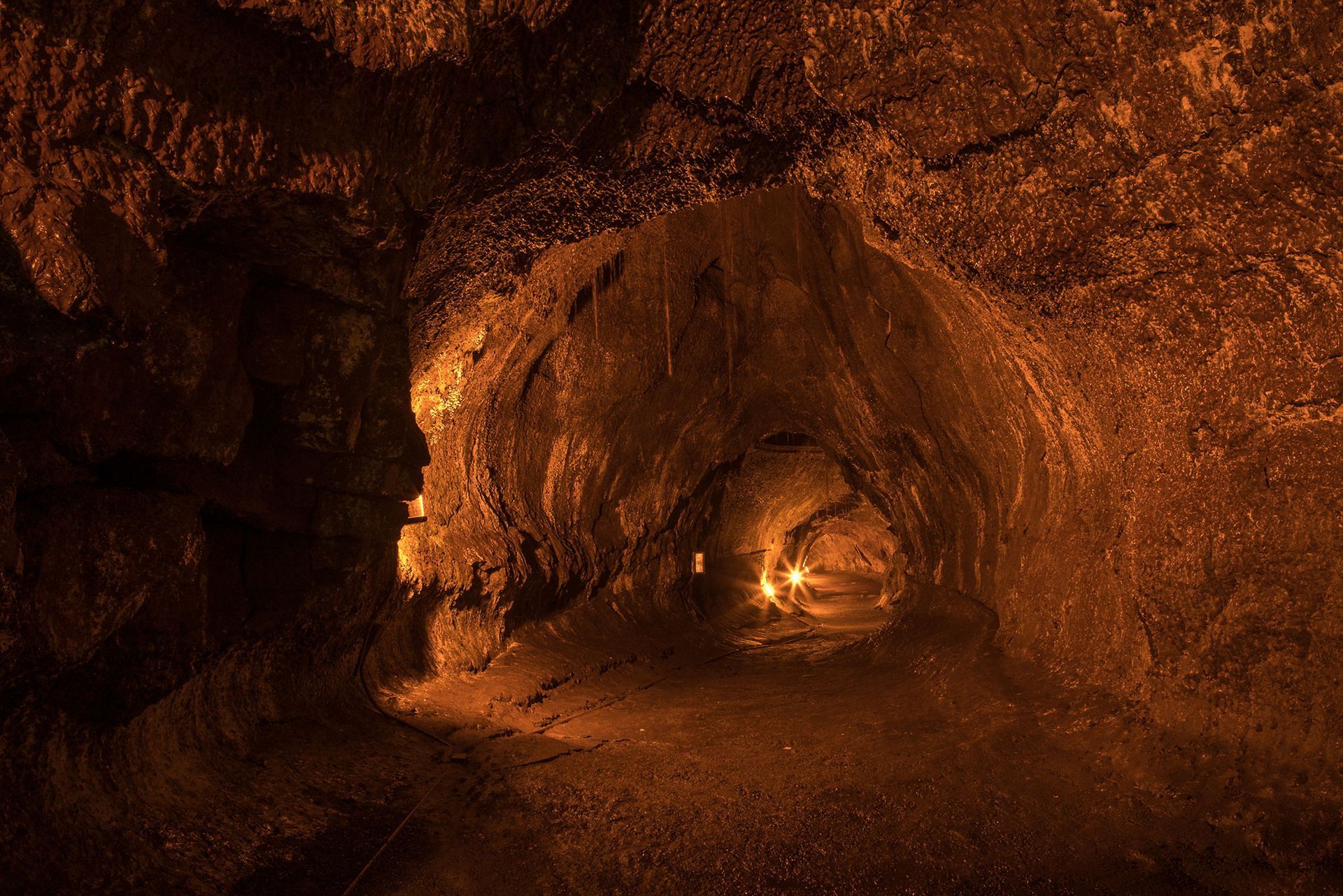
"Kazumura Cave is just one of several lava tubes that formed in that eruption, but it is by far the most important. As the worlds longest known continuous lava tube, Kazumura is a national treasure that is virtually unknown to all. Geologically speaking, Kazumura has been called a master lava tube. Nearly every type of feature found in a lava tube can be found in this cave," the Kazamura Cave Tours says.
KAZUMURA CAVE IS:
the LONGEST CAVE in the state of HAWAII at 42.5 miles (68 km) surveyed.
the LONGEST KNOWN CONTINUOUS LAVA TUBE in the WORLD.
the 33RD LONGEST CAVE in the WORLD.
the 7TH LONGEST CAVE in the UNITED STATES.
the DEEPEST CAVE in the UNITED STATES at 3613 feet (1,101.5 m).
part of the AILA`AU eruption. (A radio carbon dating estimate, places the eruption between 1410 -1470; however, oral Hawaiian accounts place the eruption two centuries later in the 1600’s.)
OTHER INTERESTING FACTS
PASSAGE DIMENSIONS can be as much as 69 feet (21 m) wide, and 59 feet (18 m) high.
The TALLEST LAVA FALL is 45 feet (13.7 m).
The TEMPERATURE in the cave VARIES with ELEVATION.
In volcano at approximately 3700 feet above sea level, the temperature is 59°F (15°C).
In Hawaiian Paradise Park at approximately 90 feet above sea level, the temperature is 72°F (22.2°C).
On it’s way to the ocean, the LAVA TEMPERATURE DROPPED 7.2°F or 4°C (basalt analysis).
The ESTIMATED CAVE VOLUME is over 1.6 million cubic yards (over 1,220,000 m³).
There are at least 101 known ENTRANCES to the cave."
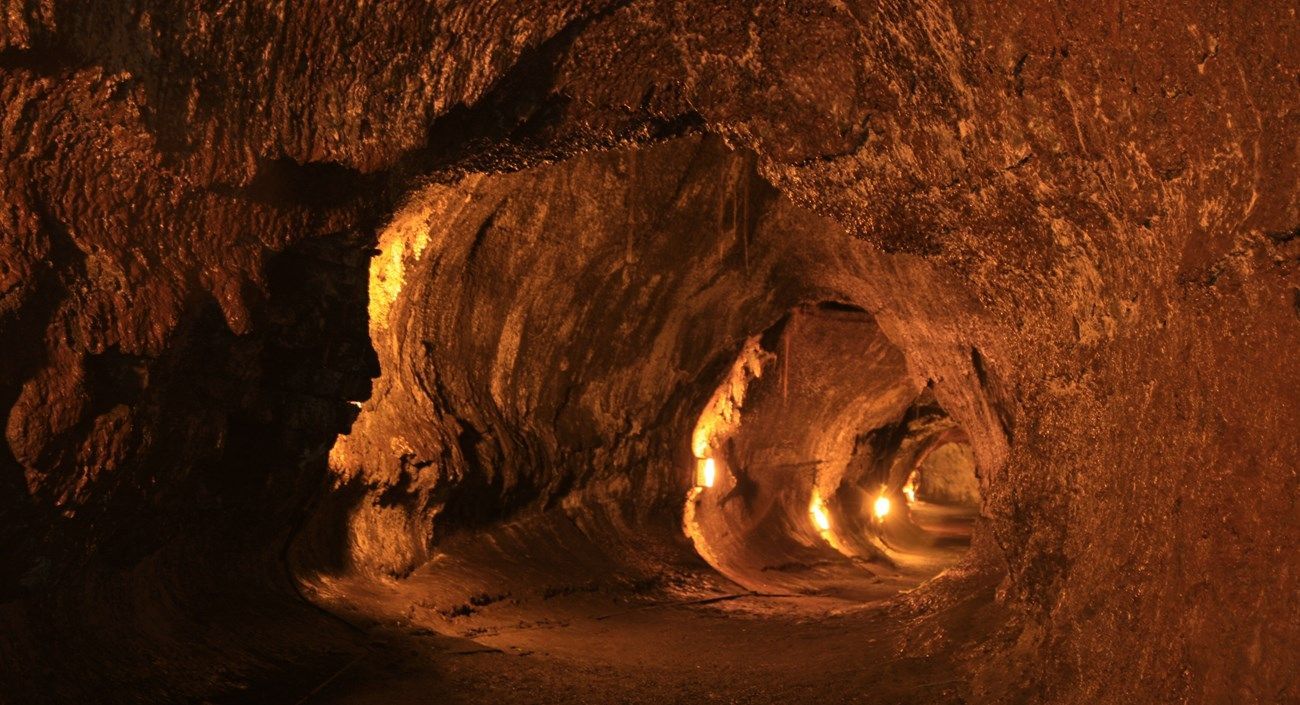
"Recently discovered and still largely unknown, Kazumura Cave on the Big Island of Hawai’i isn’t just the longest lava tube in the world – it’s also a unique national treasure of both geological and cultural significance," the Lonely Planet says.
"In 1994, Kazumura Cave was 29 miles long. A year later, it was suddenly 11 miles longer, and yet this lava tube on the Big Island of Hawai’i hasn’t grown an inch for centuries. This isn’t a riddle – it’s the reality of mapping the longest lava tube in the world. When the first attempts to map the cave were carried out decades ago, it was obvious it was the longest in the world – no other lava tube came close. But they couldn’t tell quite to what extent.
"It wasn’t until 1995, when cavers on a two-day expedition discovered connections to four previously independent lava tubes that Kazumura Cave was fully mapped out in all its glory – a 40-mile-long corridor of basalt. Yet still, rarely more than 16 yards below the surface, the lava tube remains relatively unknown. Even some locals, many of whom own the land above the tube, aren’t aware it goes all the way from Kīlauea’s east rift zone to the coast in lower Puna."
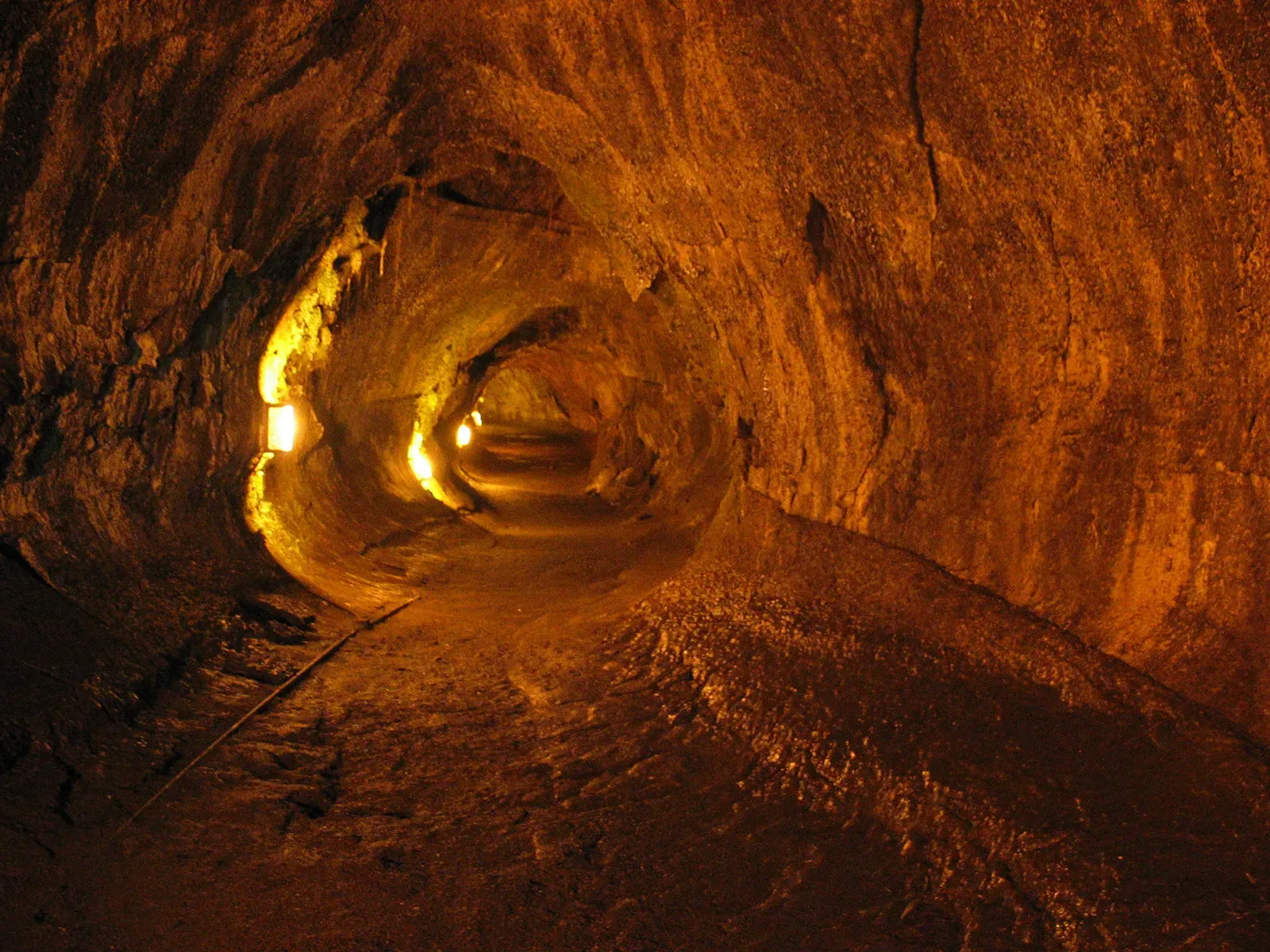
"Located on the Big Island of Hawaii, Kazumura Cave starts in Hawaii Volcanoes National Park and descends into Kilauea Valley. As one of the most geological spectacles in the world, the cave attracts scientific minds and students eager to learn more about Hawaii's volcanoes featuring lava plunge pools, quirky lava falls, and stunning stalactites,"
The Travel says.
"The lava tubes stretch up to 40.7 miles, heightening the curiosity of history buffs and experienced cavers alike. Here is all a tourist needs to know before flowing their way around this lava-molded geographical wonder.
"Besides being the world's largest lava tube, the recently discovered Kazumura Cave also boasts a rich cultural and geographic significance. Every geology buff's dream is to discover the next unique phenomenon on the earth's surface. In 1993, Kevin Allred and Mike Meyer fascinated the world when they discovered a hole connecting the two caves that later was known as the longest continuous lava tube to date. Since then, Kazumura Cave has become a tourist attraction with numerous adventure-worthy underground sections."
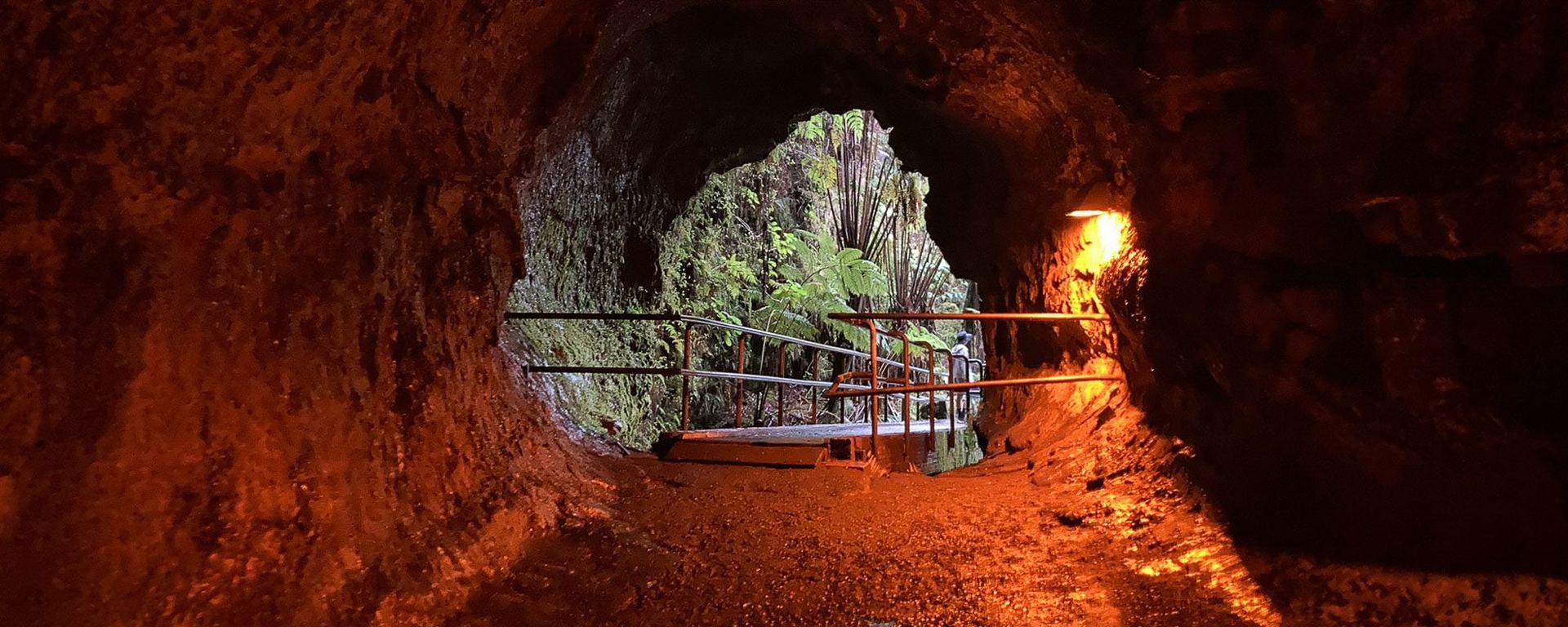
"Visitors to Hawai'i may not be aware that the 50th US state holds a unique secret – it is home to the longest lava tube in the world," the IFL Science says.
"Although Hawai'i can boast plenty of lava tubes across its islands, the biggest by far is the Kazumura Cave, which is located around 19.3 kilometers (12 miles) south of Hilo, a town on what is commonly called the Big Island. This cave stretches over 65 km (40 miles) in length and reaches over half a mile (0.8 km) in depth. It is both the longest and deepest lava tube in the world.
"As such, the Kazumura Caves represent a valuable link between Hawai'i's geological past and its cultural history. Beyond its awe-inspiring formations, this subterranean realm has been intertwined with the lives of generations of people who have lived on the islands."
"Probably no other place on Earth has as many accessible lava tubes as Hawaii, and probably no other town has proved such fertile terrain for their exploration as Ocean View," the National Geographic Magazine says.
"The lava tubes of Hawaii seem to belong on another planet. Delicate lavacicles hang from the walls and ceilings like stalactites and take on a panoply of weird shapes, from spiky shark’s teeth to bubbly, gooey driblet spires. Long, hollow soda straws, squeezed out of the ceiling by gas while the cave was cooling, hang in thick clusters. In spots, the cave’s silvery, magnesioferrite glaze crinkles up like peeling paint. Elsewhere a thin layer of gypsum colors the walls a bright white, and mats of rock-eating bacteria excrete blue-green splotches of microbial poop.
"Hawaii’s basaltic shield volcanoes have produced some of the world’s deepest and longest lava tubes—tunnels carved by rivers of molten rock. Caves etched by flowing water can take millions of years to form, while a volcanic eruption can generate miles of lava tubes in a matter of weeks or months. Thousands of these tubes twist, braid, and intersect beneath the surface of Hawaii’s Big Island."
"Kazumura Cave is the longest known lava tube cave on Hawaii and indeed in the world. Its length is 41.8 km with an end-to-end straight line distance of 32.2 km," the Science Direct says.
"The cave descends Kilauea Volcano from an elevation of 1130 m near the summit to 28 m at its lower end. The cave is complex with overlying tubes and lavafalls indicating multistage development. Lava speleothems are present."
Photos: World's Longest Lava Tube, world record in Hawaii
(1) Wikipedia/Dave Bunnell / Under Earth Images
(2,7) National Park Service
(3,4,5) Wikipedia/Dave Bunnell / Under Earth Images
(6) Go Hawaii


